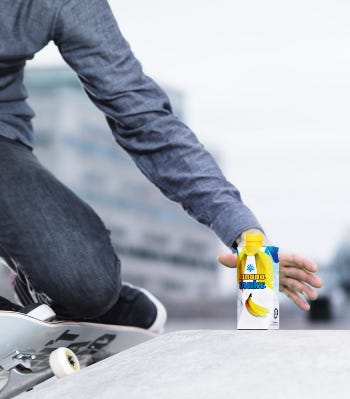March 11, 2015
Written by Suley Muratoglu, vp, marketing and product management, Tetra Pak Inc. U.S & Canada

Beverage portability
Remember when the impulse-purchase racks at the grocery store only offered toys, gum and celebrity gossip magazines? Now single-serve beverage coolers are taking up sizeable real estate "front-of-store" at grocers, convenience stores, drug stores, mass merchandisers and more thanks to a strong and seemingly universal demand for a range of grab-and-go drinks.Sales figures prove the point. Companies attuned to the convenience trend reaped high rewards last year. "Grab-and-go" packaged beverages yielded growth of 6 percent in traditional stores and 11 percent in the convenience channel in 2012—both significantly outpacing the beverage category as a whole, which grew at 2.6 percent, according to IRI estimates.
But these figures also offer clues about how to tap into this trend. Here are what beverage producers and marketers should keep in mind when formulating new products.
1. Combine hydration and nutrition
It's not just the usual soda suspects jockeying for position in the coolers. The most impressive growth is in on-trend nutritional beverages that include coconut water and ready-to-drink tea, juices and energy drinks. Convenience isn't enough; consumers are also clamoring for beverages "with benefits"—be it health or lifestyle-enhancing properties-to play to their on-the-go lifestyles. For example, the single largest category, energy drinks and shots, has grown into a nearly $7 billion business by some estimates - a full third of the beverage market as a whole by IRI figures. Coconut water, which is naturally electrolyte-rich, is making significant inroads as a sports recovery drink.
2. Focus on natural and organic properties
Consumers are scanning labels for more than just nutritional information, and properties such as "natural and organic" reign supreme. And beyond organic, back-to-nature ingredients adding label allure include cane and beet sugars, naturally derived colors (such beta carotene) and natural rather than synthetic preservatives. Organic foods and beverages are still niche players—less than five percent of the overall market—but they grew at an estimated 9.5 percent in 2011 versus 4.7 percent growth in conventional products according to the Organic Trade Assn.'s most recent annual survey. And this category is poised to continue its strong growth of recent years.
3. Right size-and upsize
Single-serve packaging experienced tremendous growth in the convenience-channel; according to IRI figures, the numbers were up 12.3 percent in ready-to-drink coffees, 10.1 percent in ready-to-drink teas, 7.1 percent in sports drinks and 4.6 percent in waters. But the meaning of single-serve has broadened to include a wider range of these smaller sizes, and companies are beginning to offer the half-liter as grab-and-go packaging and experimenting with even larger 1-liter size drinks aimed at men or day-long consumption. Beyond size, these packages should be easy to hold, with caps that are easy to drink from and resealable.
4. Go green
Even as customers demand the convenience of single-serve drinks, they are mindful of the environmental impacts of its packaging. In fact, consumers have indicated in some studies that they are willing to pay marginally more for products in sustainable packaging that can be recycled. This last finding has one key consequence for beverage makers and marketers: To take advantage of where the growth is now, and will be for the foreseeable future, any newly developed products—along with existing ones—should be offered in single-serve yet sustainable packaging.
Retailers will continue to open up space for on-the-go alternatives, and for a good reason. Consumers are asking for products that respond to their immediate needs and are ready for consumption. As the beverage category grows ever more crowded, smart companies will heed consumers' call for more health-conscious drinks, sustainably and astutely packaged to match the busy and mobile lifestyles that now predominate.
Suley Muratoglu, vp, marketing and product management, Tetra Pak Inc. U.S & Canada, currently runs the company's presence in core categories, including dairy, beverage and food.
Source: Tetra Pak
.
About the Author(s)
You May Also Like


